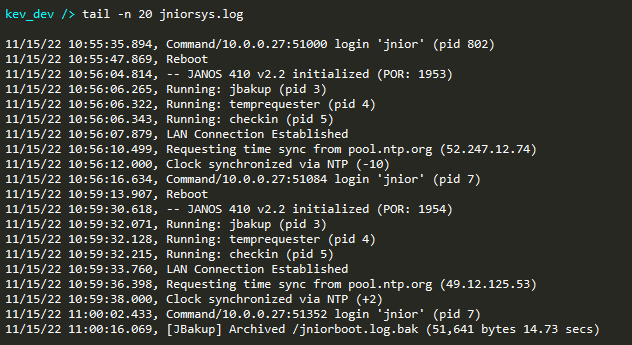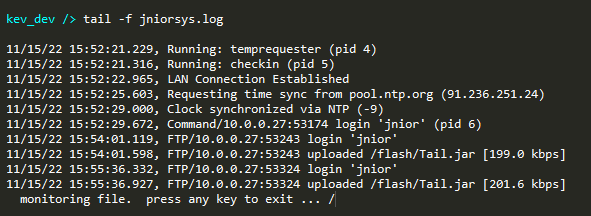Tail Command
What is the tail command?
The tail command is used to display the last n lines of a specified file. By default the tail command displays the last 10 lines of a file. This can be changed by using the -n argument and specifying a new value. If the specified file does not contain at least n lines then a the .bak version of the file will be prepended, if it exists.
Another powerful feature of the tail command is its ability to monitor and display file changes in real-time. The specified file in monitored for changes once a second and only the changed portion of the file is displayed.
How to Install tail
Below is an update project you can apply to your JNIOR to get the tail application.
| Name | Version | Release Date | Size | MD5 |
|---|---|---|---|---|
| Tail Command | v1.0 | Feb 20 2023 | 3.5 KB | e0ce27e20c337000d8fd403c76b7ce80 |
Usage
tail [OPTION]... [FILE]...| Short Options | Long Option | Option Value | Description |
|---|---|---|---|
| -n | –lines | NUMBER | The number of lines that should be displayed from the end of the file |
| -f | –follow | Monitor the file in real-time |
Default Usage
The default usage will show the last 10 lines of the specified file.

Specify number of lines to show
We can use the -n or --lines option to specify 20 lines.

Update the file in real-time
Use -f or --follow to follow the file in real-time. New entries will be displayed. This command will not return to the prompt until ANY key is pressed.
